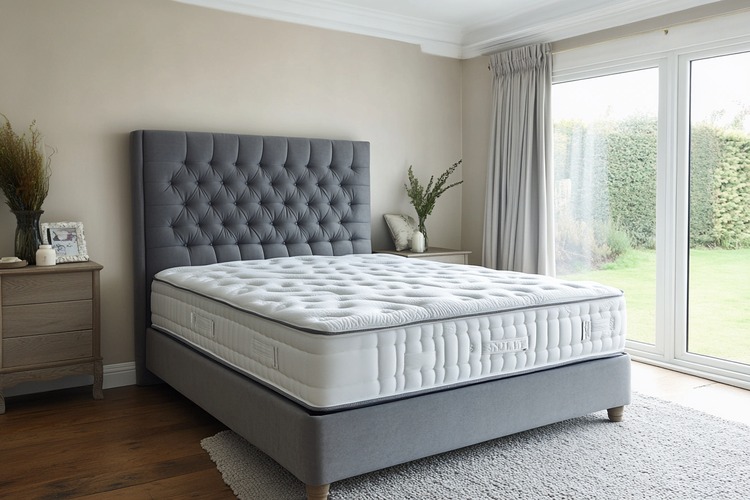Furniture Placement to Maximize Flow and Function in Sleep Spaces
Good furniture placement improves movement, comfort, and the practical use of a sleep space. Thoughtful choices around mattress position, lighting, storage, and textiles help create a room that feels restful and functional while supporting daily routines and sleep quality.

Thoughtful furniture placement shapes how a bedroom functions and feels. Start by assessing the room’s layout, including door swings, window positions, and traffic flow, then prioritize the mattress and primary furniture so movement is intuitive. Consider how lighting, ventilation, flooring, and acoustics interact with placement choices: a well-placed bed and storage system can reduce clutter, improve organization, and make the space easier to clean and ventilate. This approach helps align bedding, decor, and textiles with daily habits while preserving open pathways and a calming palette.
Layout and furniture positioning
Arrange furniture to support natural circulation rather than fitting everything against walls by default. Place the bed so it’s easily accessible from both sides when possible, allowing for bedside tables and clear walking paths. Use the layout to define zones—sleeping, dressing, and a small seating or work nook—without blocking windows or doors. Leave at least 60–90 cm (24–36 in) of clear space around major pieces where feasible to maintain flow. Consider multifunctional furniture to reduce the number of pieces and keep the room visually open.
Mattress placement and headboard impact
Positioning the mattress affects both comfort and the room’s focal point. Center the bed on the main wall opposite the door or near a window for natural light, but avoid drafts that can affect ventilation. A headboard anchors the bed visually and can provide practical benefits, such as a backrest for reading and a barrier against cold walls. Choose a mattress size that permits bedside circulation and complements storage needs; oversized mattresses in small rooms often hinder flow and organization.
Lighting and color choices
Layered lighting supports different activities and influences perceived space. Combine ambient ceiling fixtures with bedside lamps and accent lighting for decor or shelving. Position lighting to avoid casting shadows across the mattress or work areas. Color choices also impact flow: lighter walls and consistent color accents help create continuity between furniture and textiles, while strategic darker tones can define a headboard wall or storage zone. Curtains should coordinate with both color and light control needs to balance privacy and daylight.
Storage and organization strategies
Integrate storage into the layout to keep surfaces clear and maintain pathways. Built-in wardrobes, under-bed drawers, and multi-use benches reduce the need for extra freestanding pieces. Locate primary storage close to dressing areas for convenience and secondary storage for linens near the bedding. Organization techniques—decluttering, using dividers, and maintaining a regular rotation of textiles—help ensure that storage solutions actually free up floor space rather than crowd it. Thoughtful storage placement improves both function and the visual calm of the room.
Acoustics, ventilation, and airflow
Furniture can influence room acoustics and the effectiveness of ventilation. Soft textiles like rugs, curtains, and upholstered furniture absorb sound and reduce echo near the mattress. Avoid blocking vents, radiators, or window openings with large pieces; maintaining airflow is important for temperature regulation and indoor air quality. If the bed sits near a noisy hallway or street-facing window, consider positioning storage or a bookshelf as a buffer to improve acoustics without sacrificing ventilation. Curtains and textiles should allow adjustable airflow while controlling light and sound.
Textiles, flooring, and decor for cohesion
Select textiles and flooring that support movement and comfort. A rug under the lower two-thirds of the bed can define the sleeping zone and protect flooring while leaving clear circulation at the foot of the bed. Coordinate bedding, curtains, and throws with the room’s color scheme and decor to create visual cohesion; this reduces the perceived clutter of many disparate items. Choose flooring that suits your lifestyle—hardwood or laminate for easy cleaning, plush rugs for warmth—and place furniture to protect high-traffic surfaces.
A cohesive placement strategy balances aesthetic choices with practical needs: mattress accessibility, lighting layers, intelligent storage, and attention to acoustics and ventilation all contribute to a functional sleep space. Focus on creating clear pathways, grouping related functions, and using furniture to frame zones rather than block movement. The result should be a bedroom that supports rest, storage, and daily routines while feeling open and intentionally arranged.





